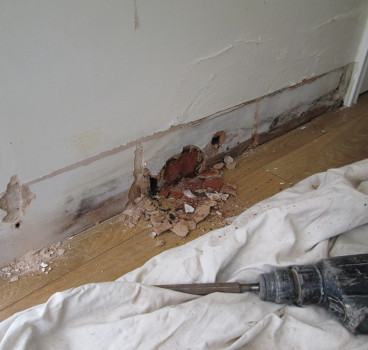Eastbourne’s fire ravaged hotel five year later
When a devastating fire destroyed a once grand and historic hotel,
one could have expected an effort to rebuild and replace it quickly. However,
in this case it has become a symbol of disruption ever since. The fire on
November 22nd 2019 tore through the Claremont Hotel on Eastbourne’s
seafront and caused severe damage to the Grade II* listed building, leaving
much of the structure in ruins. Despite initial efforts to retain the
Georgian front facade the damage was too extensive and the building was demolished,
leaving the site in a prolonged period of disrepair, writes Iain Cox, Chair of Business Sprinkler Alliance.
For years the site opposite the pier has been an eyesore for the local community with peeling hoarding, scaffolding and overgrown weeds where the once grand building stood. The lengthy recovery period has been a stark reminder of how long it can take to recover a site from such a devastating event. Many in the local area had hoped for a swift rebuild, but as the site remained dormant, the reality of recovery became clear. In the background the accounts of the group that owned the hotel indicate that they obtained a cash settlement with the insurers and that enabled them to purchase another hotel in Eastbourne, leaving them with considerable costs for demolition of the site.
Originally part of the prestigious Grand Parade terrace built in the mid-19th century, the hotel had stood as a prominent feature of Eastbourne's seafront for many years. The terrace was designed as part of the vision of William Cavendish, the second Earl of Burlington, who later became the 7th Duke of Devonshire. Despite the hotel's rich history and heritage, the fire brought an abrupt end to its legacy.
Now, over five years since the fire, there is finally hope for the site’s future. While no formal planning application has yet been submitted, a developer is planning to transform the location into 55 luxury flats. It is not clear who owns the site now but the plans aim to bring new life to the area, adding to the regeneration of the Grand Parade and the surrounding seafront.
Rebuilding after a fire is a lengthy process, often taking much longer than people anticipate. While the fire itself may have taken just hours to devastate the building, the process of recovery and redevelopment involves careful planning, discussions, and securing the necessary approvals. This can take several years, particularly when working with historic structures and ensuring compliance with modern building regulations and safety standards.
While many hotels are required to comply with certain fire safety regulations, many often think that they have sprinklers but they are not always mandated, especially in lower-rise buildings. Sprinkler systems can significantly reduce the extent of damage during a fire and help protect lives. The Claremont Hotel fire, like many others, highlights the impact of fire on a business and the knock-on effect on the community. It also highlights our view of the need for effective fire safety measures, including sprinklers, in all hotel buildings, especially older ones that have been converted for modern use.
It does make one wonder about a similar and more recent fire event that occurred in a listed building converted to a hotel, the Chiltern Firehouse in London. The February 2025 blaze, which spread from a pizza oven and caused extensive damage to a four-storey building, took over five hours to bring under control and required more than 100 firefighters. Despite no injuries, the fashionable London hotel will be closed for the foreseeable future and has highlighted the need to carefully evaluate fire safety measures in hotels, particularly those housed in historic buildings converted for hotel use. One might wonder how long before this building is repaired and returned to use?
As Eastbourne looks toward its future, the transformation of the Claremont Hotel site offers hope that one of the town’s most historic areas can be revitalised, with what the developer states ‘promises to blend modern living with Eastbourne’s rich heritage.’ While it has been a long and difficult journey, the end is now in sight for the Claremont Hotel site, with the once-derelict land rising from the ashes and becoming a vibrant part of Eastbourne’s Grand Parade once again.
For more information about the BSA visit the www.business-sprinkler-alliance.org
Additional Blogs

How construction can cut Its carbon footprint by caring for soil
Soil is often dismissed as mere dirt, but it is one of the planet’s most powerful carbon stores, holding more than all of the world’s forests combined. Yet in our rush to build, pave and develop, we...
Read moreWhat is bridging damp? How it happens and how to fix it
Bridging damp happens when moisture finds a path around the building’s damp-proof course (DPC) so it reaches your internal walls and skirting. If you see damp patches rising above the skirting or...
Read more

The silent death of the fixed-price contract
For decades, the fixed-price contract has been the backbone of construction procurement. It promised certainty with a defined scope, an agreed sum and a clear transfer of risk from client to...
Read more